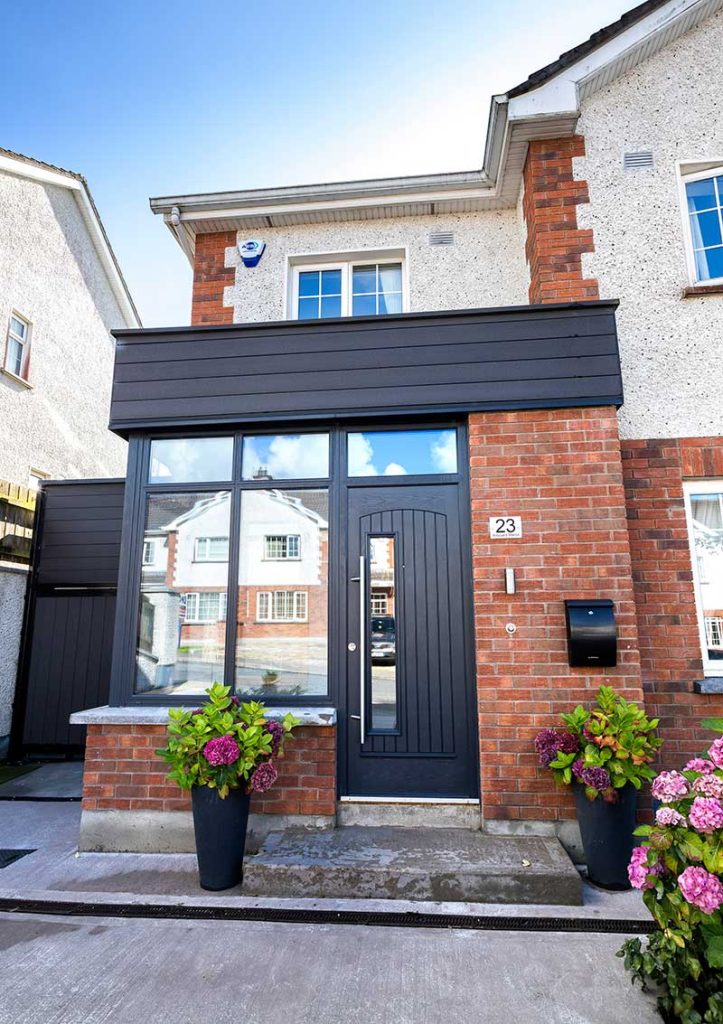Clíodhna and Enda Rooney faced a common dilemma: move to a new house or transform their existing semi-detached home. Opting for the latter, they embarked on a remarkable journey to revitalize their living space.
Deciding to Renovate: A Personal Journey
Initially, Clíodhna and Enda were apprehensive about renovating their semi-detached home, situated between two houses. Concerned about limited space and privacy, however, with the encouragement of their friend and designer, Martin, they decided to stay put. Martin’s vision was to revamp the house focusing on creating warmth and light without compromising privacy, a challenge in many semi-detached properties.
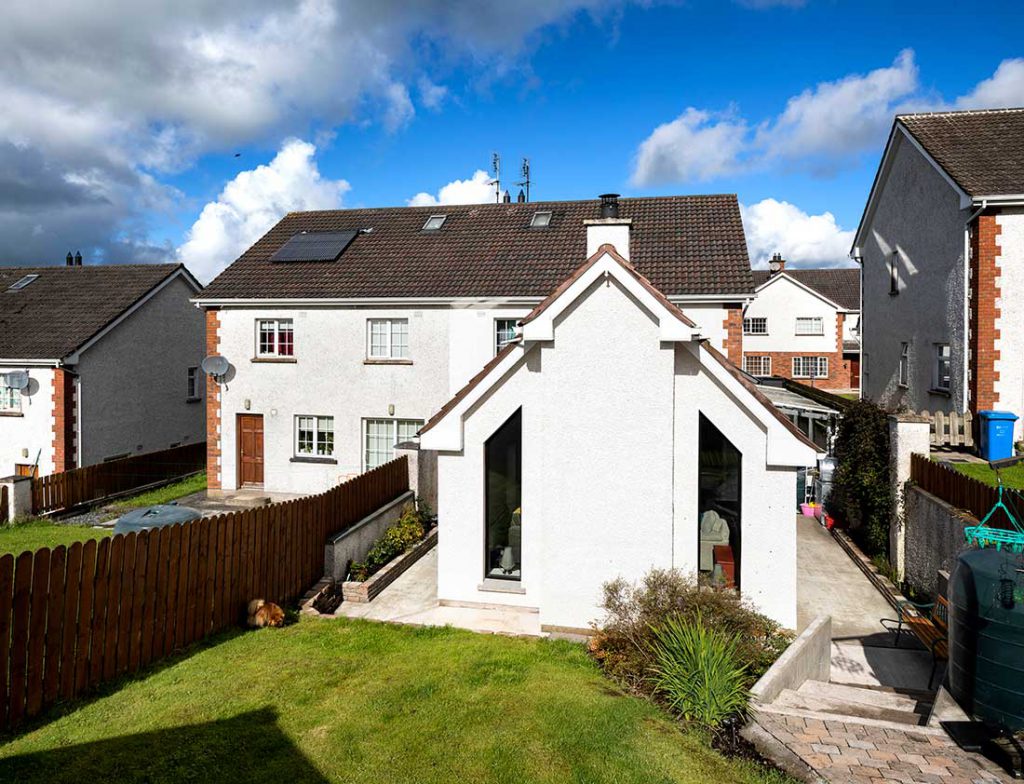
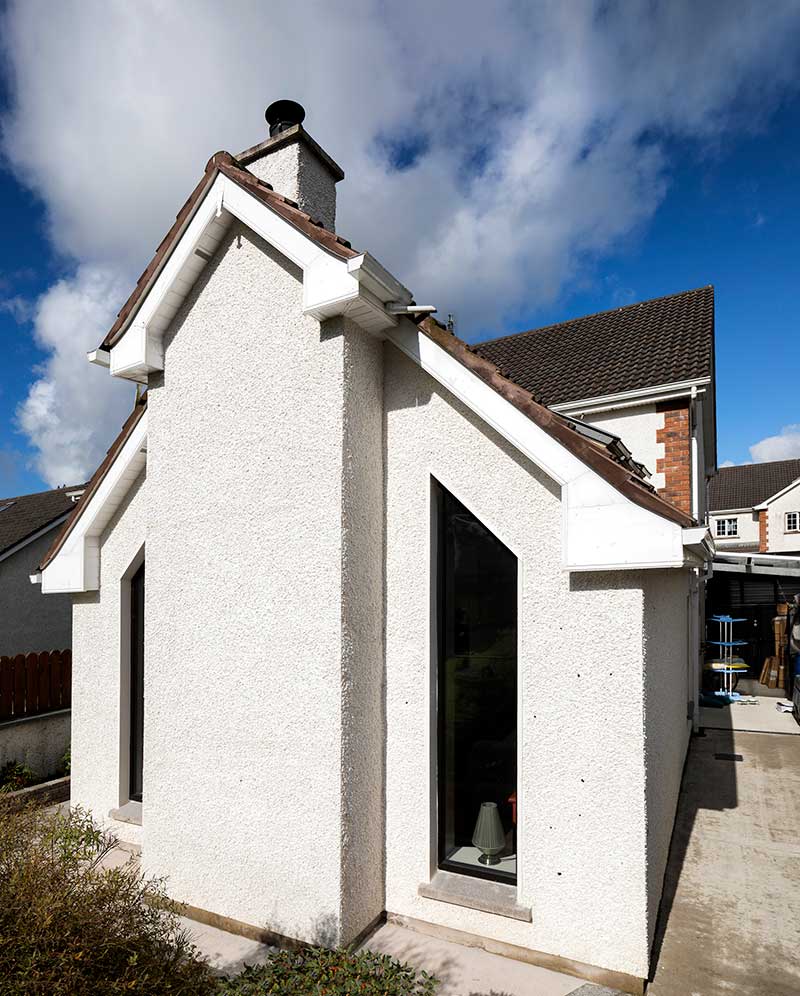
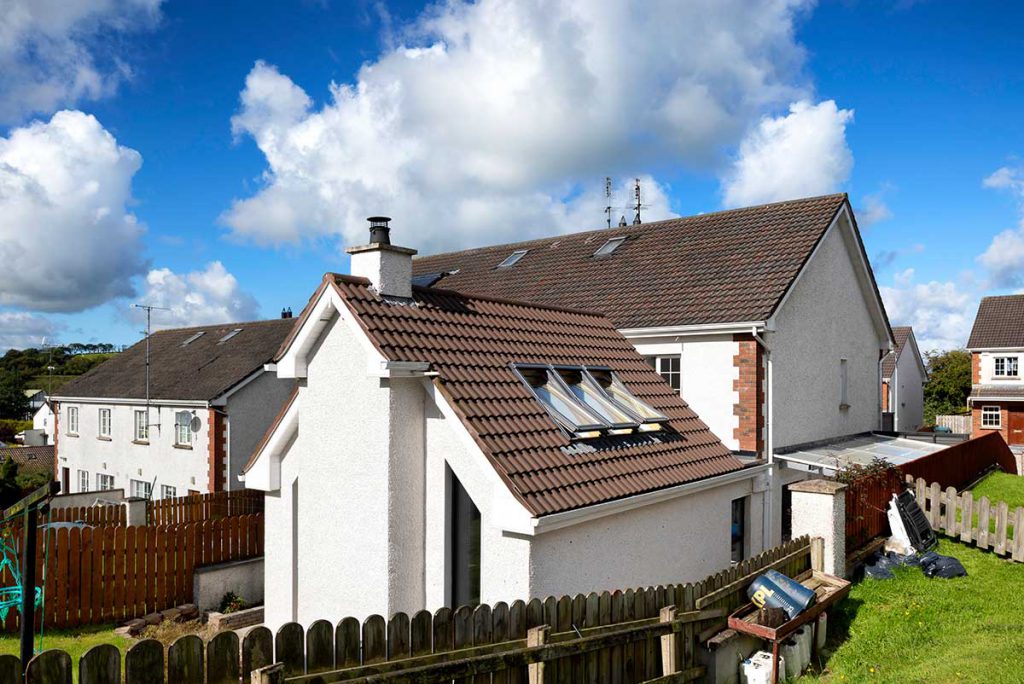
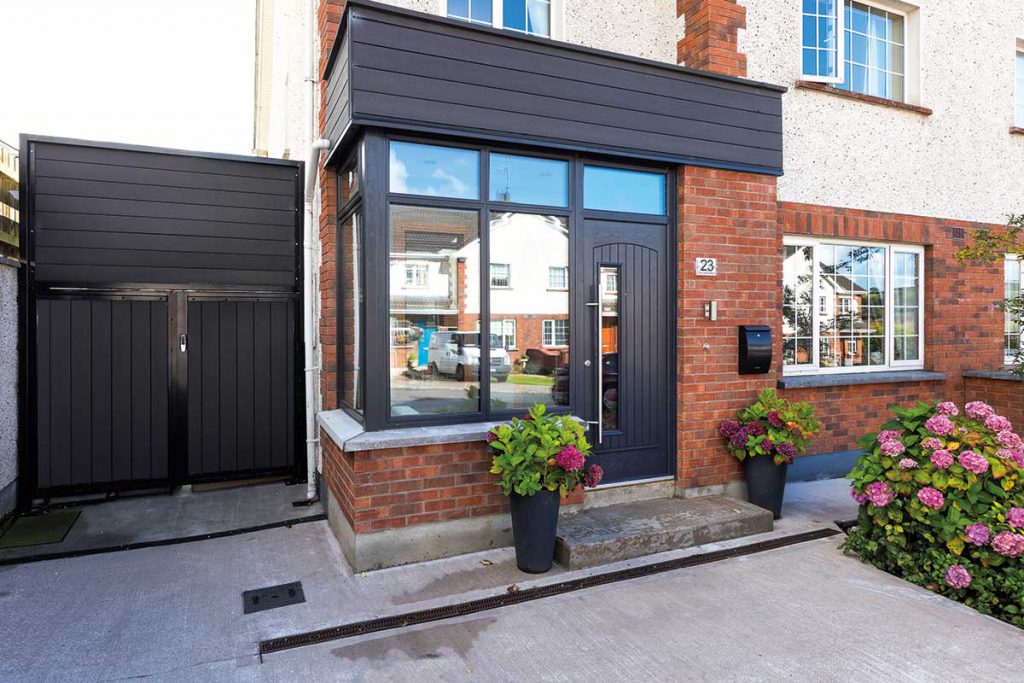
The Design Process: Overcoming Spatial Challenges
Clíodhna and Enda, like many, first attempted to sketch out their ideas but soon realized the value of professional input. Martin proposed several innovative designs that addressed their need for privacy and light. This phase highlights the importance of trusting in professional expertise when it comes to home design.
Tailoring to Family Needs: Functional Spaces
Understanding the family’s daily routine was key. They desired a porch for convenience and an additional living space for their teenage daughter, Laoise. The extension, under 40sqm, did not require planning permission, making the process smoother. This part of the guide emphasizes the need to align renovation goals with practical family requirements.
Thermal Comfort and Energy Efficiency
Previously, the house had undergone energy upgrades, but additional insulation was added during the renovation for enhanced comfort. This section can explore the benefits of energy-efficient renovations and government grants available in Ireland, providing a useful resource for homeowners looking to save on energy costs.
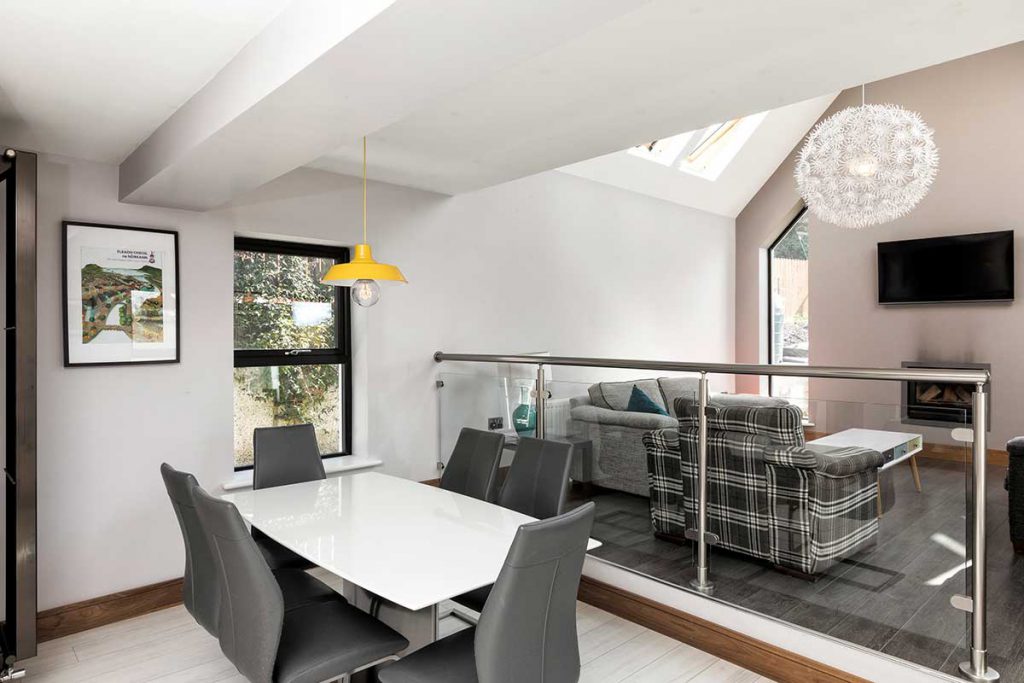
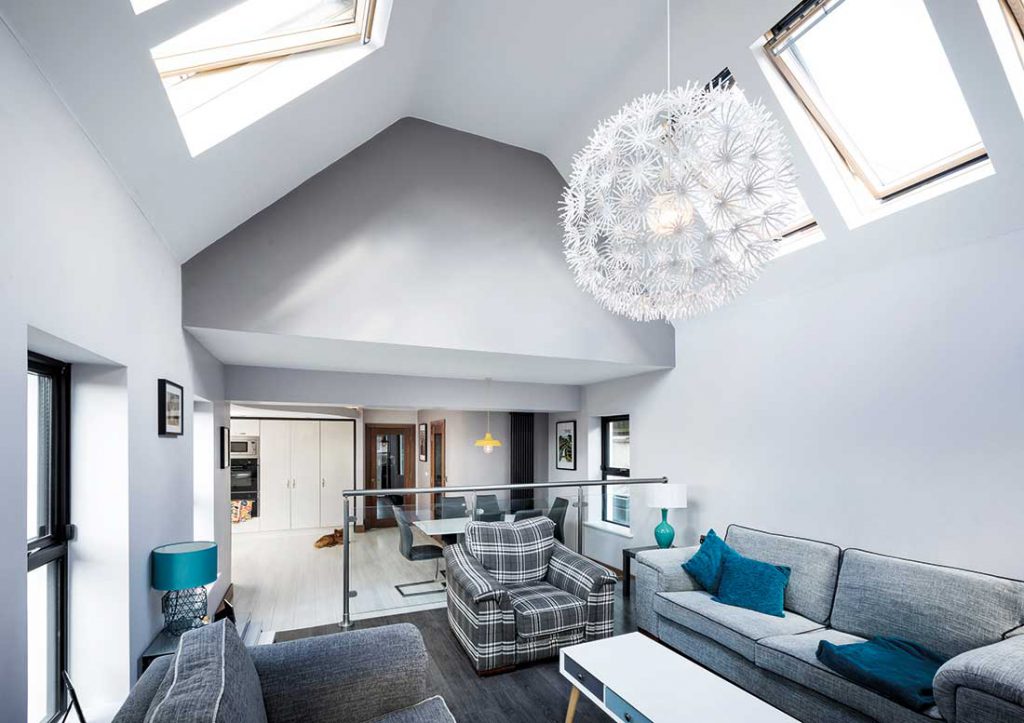
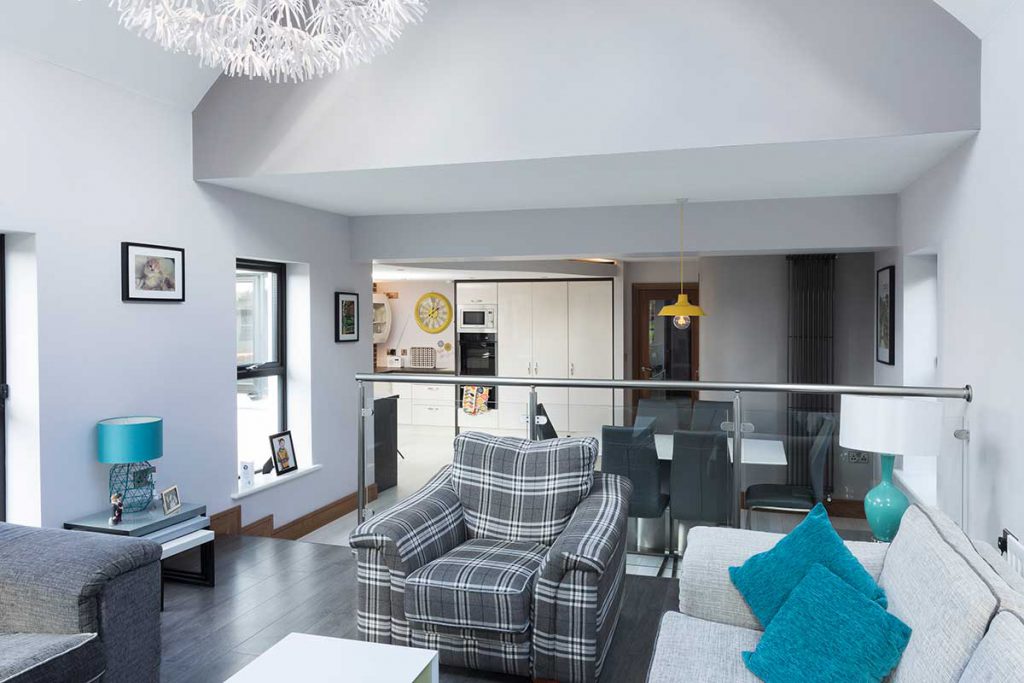
Architectural Features: Creating a Unique Space
The renovation’s standout feature was the innovative use of high walls and vertical glazing in the new living space, ensuring privacy and natural light. The choice of standard rooflights created a cathedral-like effect, a cost-effective solution that enhanced the aesthetic appeal. This segment can delve into architectural strategies for maximizing light and privacy in semi-detached homes.
Interior Design: Merging Functionality with Style
The interior design cleverly separated the kitchen and living areas without creating a stark division, using differences in levels and transparent partitions. This section can provide tips on using architectural elements to define spaces in a home, maintaining an open feel while ensuring functional separation.
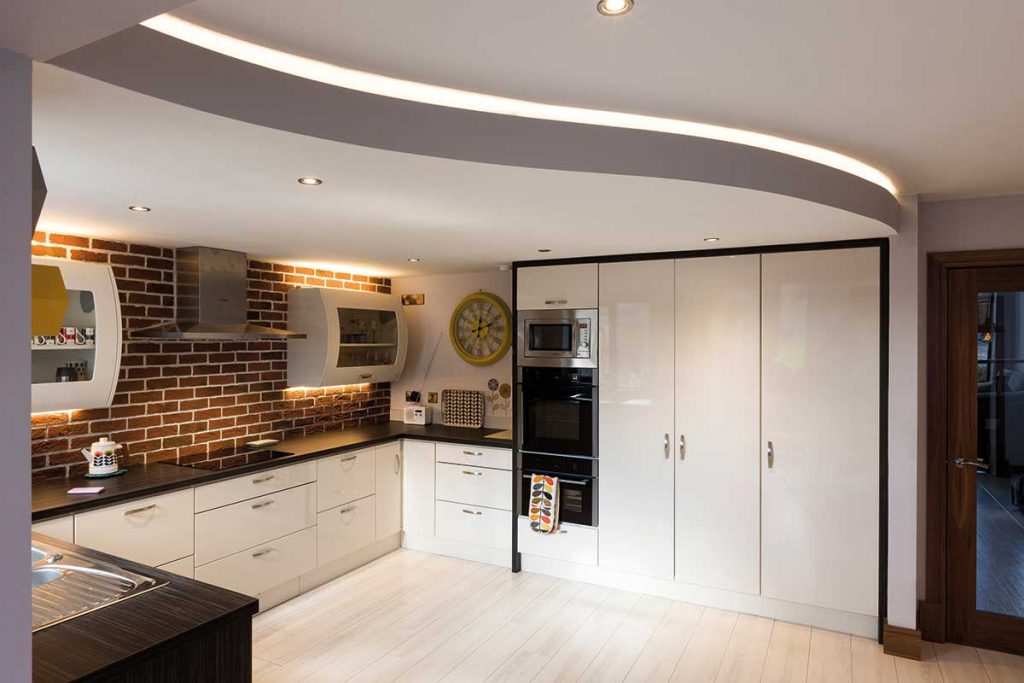
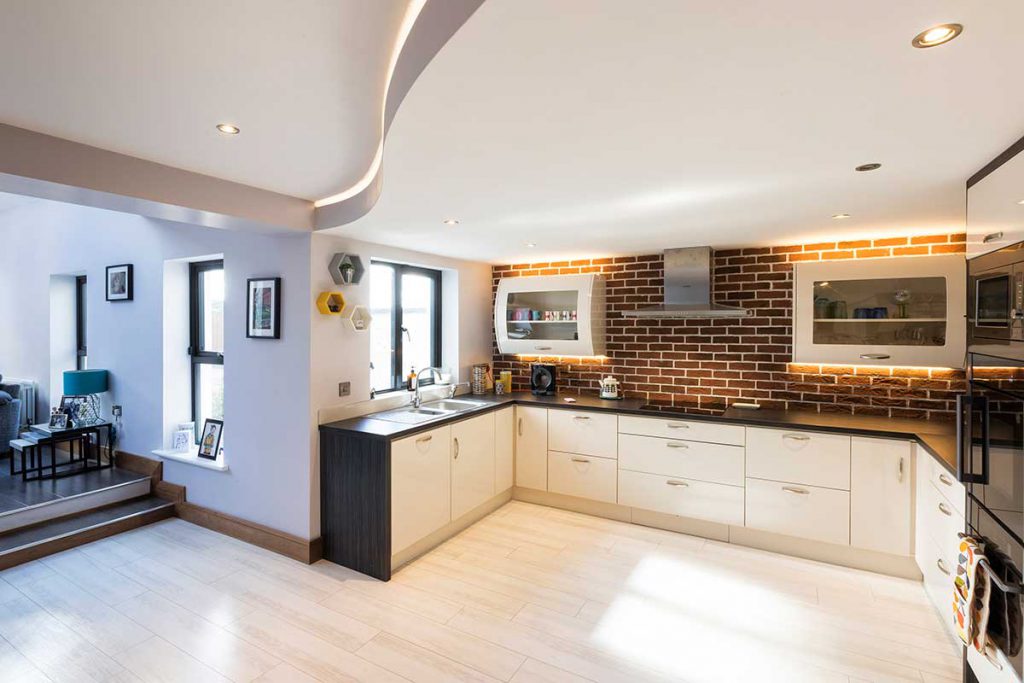
The Kitchen: Heart of the Home
In their kitchen design, Clíodhna and Enda prioritized functionality over trends. Opting against a popular island or breakfast bar, they chose a layout that suited their space and lifestyle. This part can offer advice on designing a kitchen that balances aesthetic appeal with practicality, especially in semi-detached homes where space might be limited.
Lighting Design: Setting the Mood
Artificial lighting played a crucial role in the renovation. Unique features, like LED mood lighting, were incorporated to enhance the kitchen’s ambiance. This section can discuss the importance of lighting in home design, offering tips for creating a warm and inviting atmosphere.
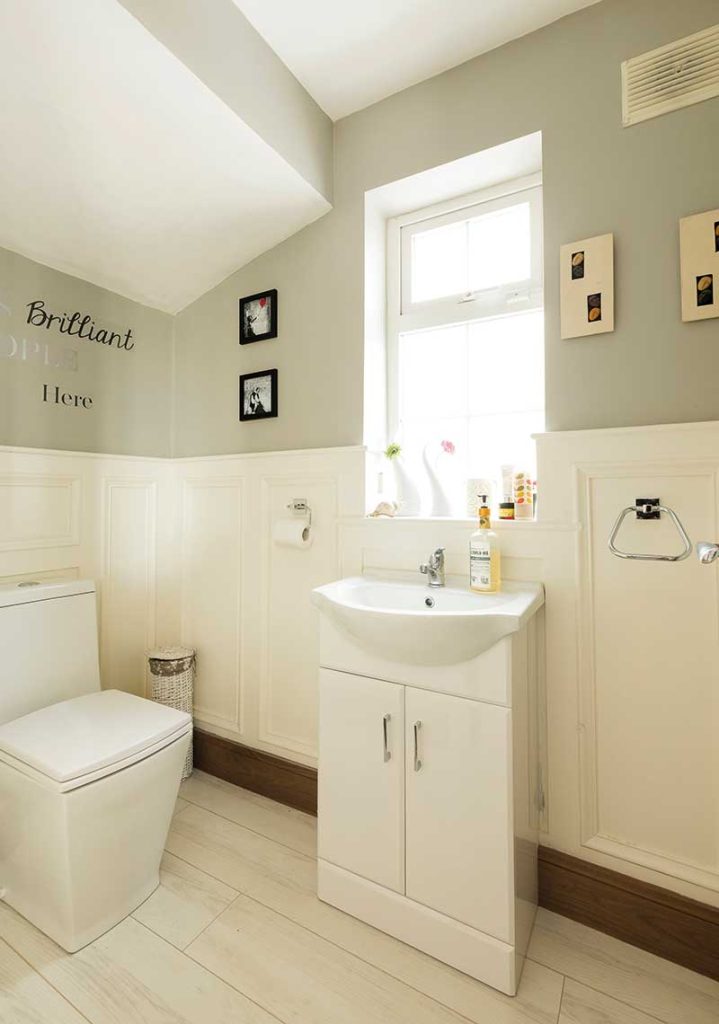

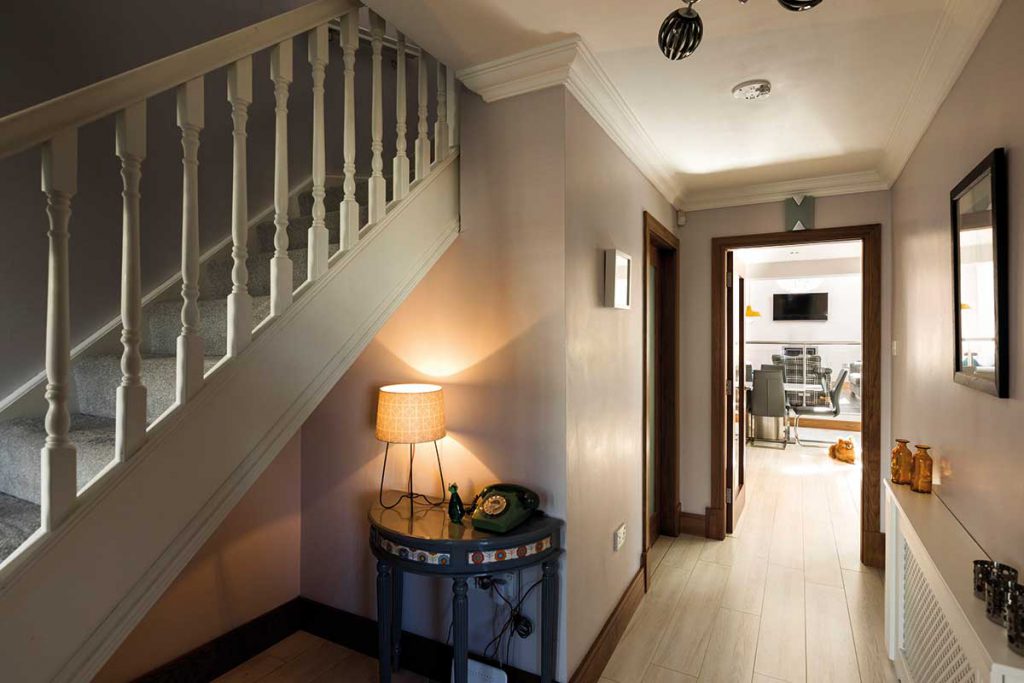
Spec
Wall: cavity wall (100mm blocks on internal and outer leaf) filled with 150mm PIR insulation boards and cavity closer together with 50mm insulation with 12.5mm plaster board to inner leaf. U-value 0.14W/sqmK
Roof: cut timber roof rafter sizes 50×150, collar size 50×150, hanger size 50×150, 150mm PIR between rafters with 82.5mm PIR insulated plasterboard to underside of sloped ceilings, 400mm of attic quilt insulation between and above ceiling joists. U-value 0.18W/sqmK
Floor: 100mm sand cement screed on 125mm PIR insulation horizontally with 25mm PIR on vertical edge, on 100mm concrete on compacted hardcore. U-value 0.13W/sqmK
Windows: triple glazed, uPVC, U-value of units 0.77W/sqmK and G-value 0.38
Q&A
Would you do it again? Yes I would, I really enjoyed the design process.
What advice would you give? Don’t just build a box, get someone with expertise in design as they’ll know what’s the best thing to build in that space with the money that you have. We’d drawn so many sketches, we had so many ideas in our heads, and Martin turned it all around to produce something much better.
What surprised you? I didn’t expect to be able to live without a kitchen for 12 weeks but it wasn’t as bad as I expected. Although, much to my surprise, I did get sick of eating Chinese!
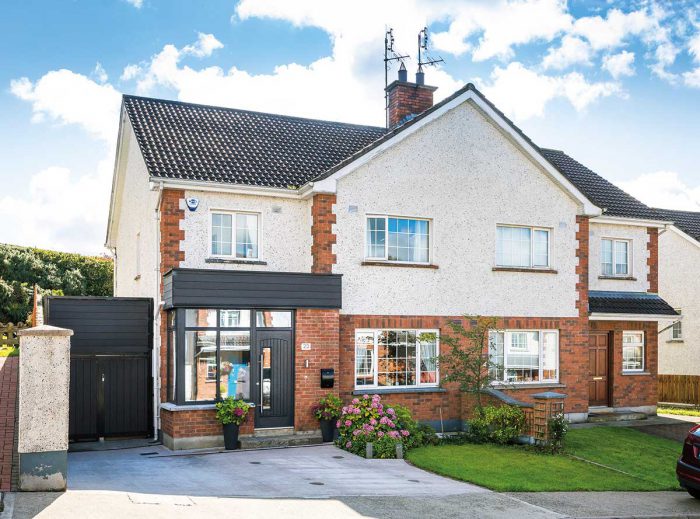
Kitchen Tips
Consider how you cook. I love the kitchen waste disposal unit at the sink (even though the dog hates how noisy it is). It’s just brilliant for all the scraps.
Get rid of the kettle. The hot water tap is brilliant, I wouldn’t do without it.
Give yourself enough room to manoeuvre. We made sure we could open fridges, dishwashers and so on without affecting the movement of others in the kitchen.
Suppliers
Insulation grant: Better Energy Homes Scheme from the Sustainable Energy Authority of Ireland, seai.ie
Design and supervision: J. Martin McLaughlin B.Eng (Hons) CEng MIEI of October House Design Ltd, Ballyshannon, Co Donegal, octoberhouse.org
Building contractor: Niall Mulligan Construction, Castleblayney
Plumbing: John Mc Geough Plumbing, Castleblayney, Co Monaghan
Electrician: Declan Mc Guire Electrical, Castleblayney, Co Monaghan
Floors: Irwin Tiles & Hardwood Flooring, Castleblayney, Co Monaghan
Insulation: Kingspan Insulation, kingspaninsulation.ie
Kitchen: Colt Design, Castleblayney, Co Monaghan
Electrical Appliances: Watters Electrical, Culloville, Co Armagh
Photography: Paul Lindsay at Christopher Hill Photography, Belfast, Co Antrim
